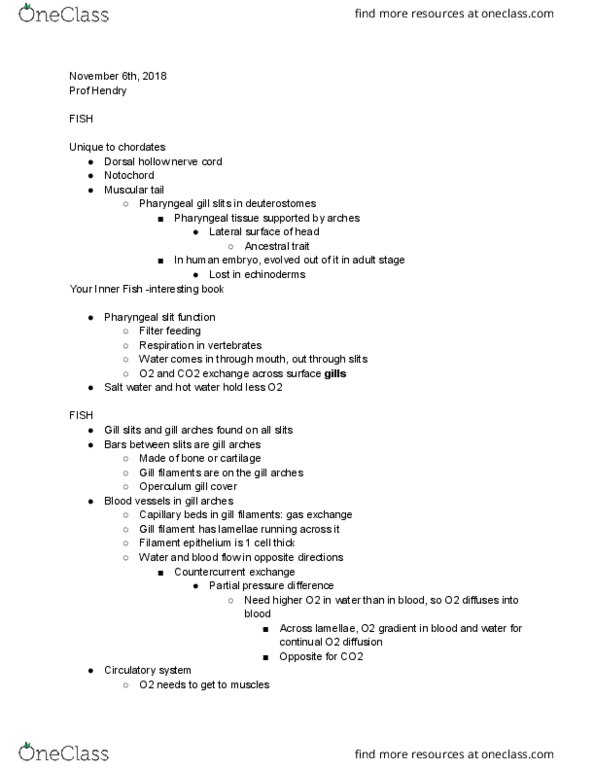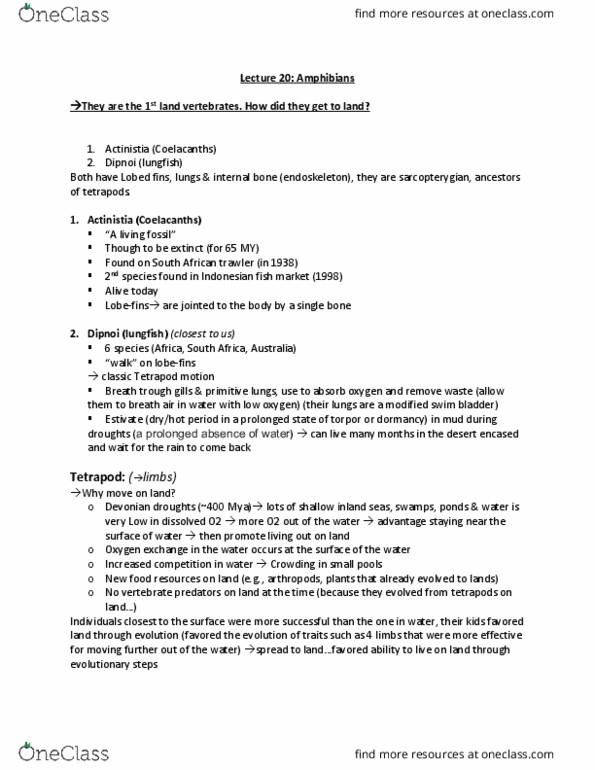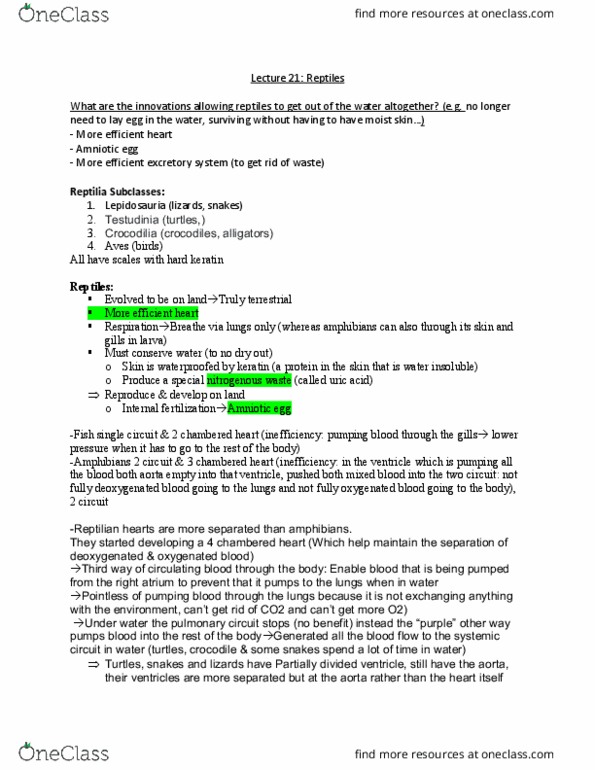BIOL 111 Lecture Notes - Lecture 20: Actinistia, Swim Bladder, Sarcopterygii
BIOL 111 verified notes
20/26View all
Document Summary
How did they get to land: actinistia (coelacanths, dipnoi (lungfish) Both have lobed fins, lungs & internal bone (endoskeleton), they are sarcopterygian, ancestors of tetrapods: actinistia (coelacanths) Though to be extinct (for 65 my) Found on south african trawler (in 1938) 2nd species found in indonesian fish market (1998) Lobe-fins are jointed to the body by a single bone: dipnoi (lungfish) (closest to us) Breath trough gills & primitive lungs, use to absorb oxygen and remove waste (allow them to breath air in water with low oxygen) (their lungs are a modified swim bladder) Estivate (dry/hot period in a prolonged state of torpor or dormancy) in mud during droughts (a prolonged absence of water) can live many months in the desert encased and wait for the rain to come back. Differences between land and water as relevant to life: availability of water/moisture: less water on land: (disadvantage) Out of the water species would dry out.




